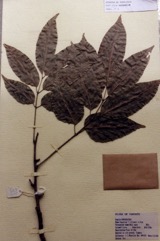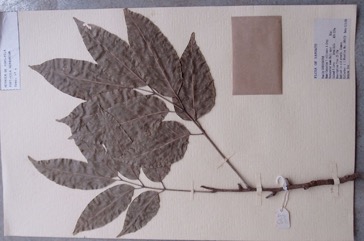Kaunithina

A tropical plant. It occurs in dense or dry forest. It grows from sea level to 1,000 m altitude. In Samoa it grows from sea level to 700 m altitude. A small understory tree in lowland and foothill rainforests. It is recorded from Morobe Province and New Britain as well as Malaysia. It grows up to 250 m altitude.
Also known as:
Angari, Aropir, Banaga, Bitung, Didi, Kauloa, Kauningai, Ma'ali, Mbulundavui, Ndawandawa, Ndindi, Nggaunggau
Synonyms
- Canarium bacciferum Leenh.
- Canarium samoense Engl.
- Canarium schlechteri Lauterb.
- Canarium smithii Leenh.
- Canarium pilosum subsp. pilosum sensu Leenh.
- Canarium gutur de Miklouho-Maclay
Edible Portion
- Seeds, Nuts
Where does Kaunithina grow?
Found in: American Samoa, Asia, Australia, Fiji, Malaysia, Pacific, Papua New Guinea, PNG, Samoa, SE Asia, Solomon Islands, Tonga, Vanuatu
Notes: There are 80-95 Canarium species.
Status: This species has been recorded as having edible seeds. Its potential is not known, but it is only a minor food.
Growing Kaunithina
Cultivation: The tree grows wild from seeds.
Edible Uses: The seeds have been recorded as edible.
Production: Trees flower and fruit throughout the year. The flowers are recorded in June, August and November. The fruit are recorded in March and May to September.
Nutrition Info
per 100g edible portion| Edible Part | Energy (kcal) | Protein (g) | Iron (mg) | Vitamin A (ug) | Vitamin c (mg) | Zinc (mg) | % Water |
|---|---|---|---|---|---|---|---|
| Nuts | - | - | - | - | - | - |
Kaunithina Photos


References
Altschul, S.V.R., 1973, Drugs and Foods from Little-known Plants. Notes in Harvard University Herbaria. Harvard Univ. Press. Massachusetts. no. 1988
Bourke, M., 1995, Edible Indigenous Nuts in Papua New Guinea. In South Pacific Indigenous Nuts. ACIAR Proceedings No 69, Canberra. p 46
Cooper, W. and Cooper, W., 2004, Fruits of the Australian Tropical Rainforest. Nokomis Editions, Victoria, Australia. p 96
Jackes, B.R., 2001, Plants of the Tropics. Rainforest to Heath. An Identification Guide. James Cook University. p 45
Lebot, V. & Sam, C., Green desert or ‘all you can eat’? How diverse and edible was the flora of Vanuatu before human introductions?. Terra australis 52 p 410
Nombo, P. & Leach, J. 2010, Reite Plants: An Ethnobotanical Study in Tok Pisin and English. ANU press. p 110
Parham, H. B. R., 1940, Fiji Plants Their Names and Uses. Supplement to the Journal of the Polynesian Society. Memoir No. 16
Smith, A.C., 1985, Flora Vitiensis Nova: A New flora of Fiji, Hawai Botanical Gardens, USA Vol 3 p 474
Walter, A & Sam, C., 1995, Indigenous Nut Trees in Vanuatu: Ethnobotany and Variability. In South Pacific Indigenous Nuts. ACIAR Proceedings No 69. Canberra. p 57
Walter, A. & Sam C., 2002, Fruits of Oceania. ACIAR Monograph No. 85. Canberra. p 131
Whistler, W.A., 2004, Rainforest Trees of Samoa. Isle Botanica Honolulu, Hawaii. p 35
World Checklist of Useful Plant Species 2020. Royal Botanic Gardens, Kew
www.pngplants.org